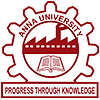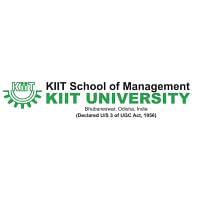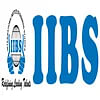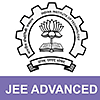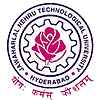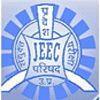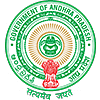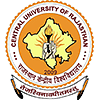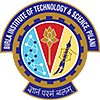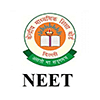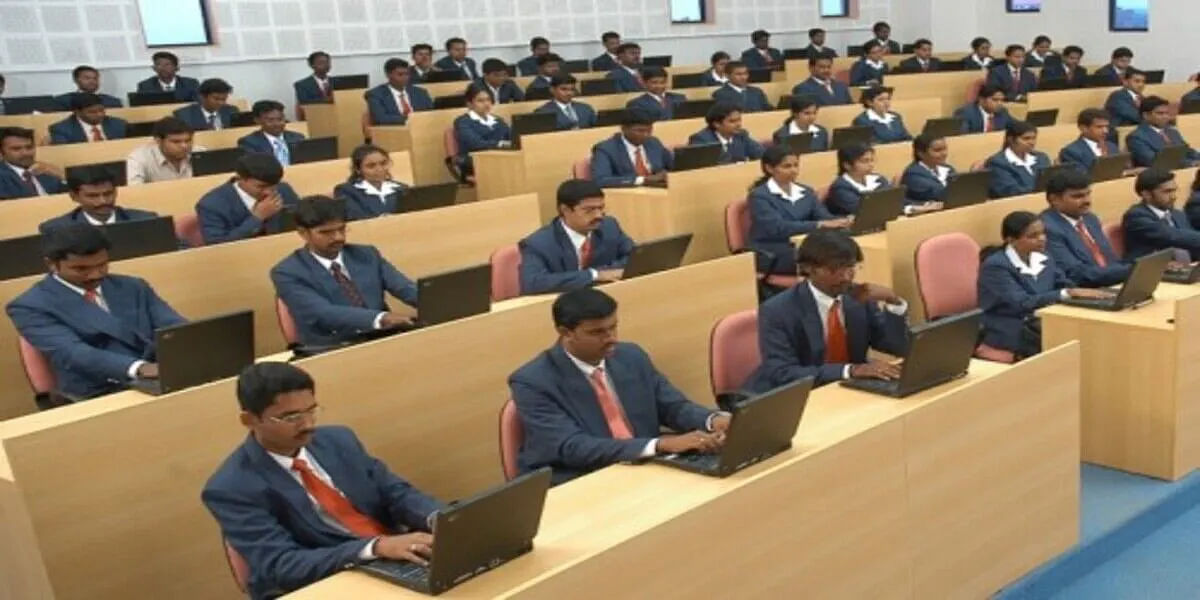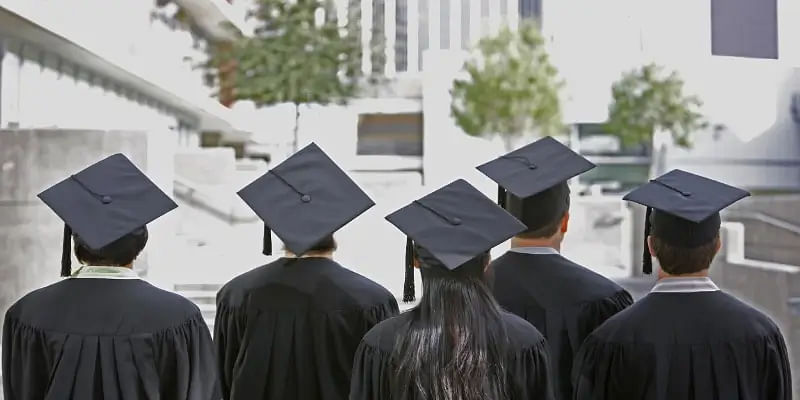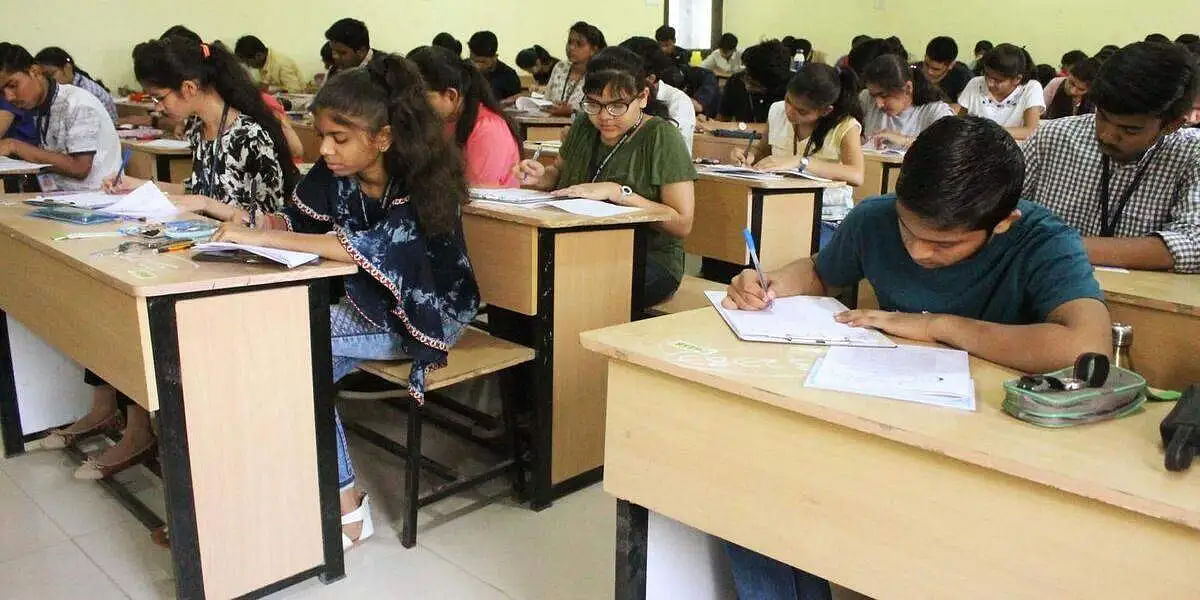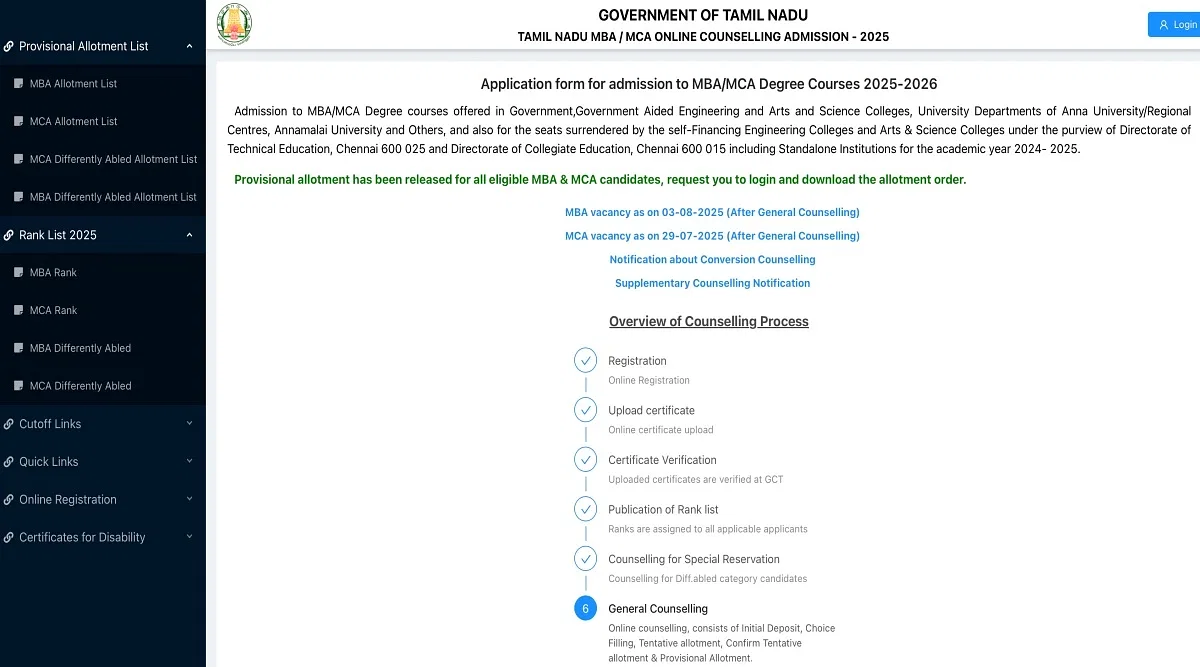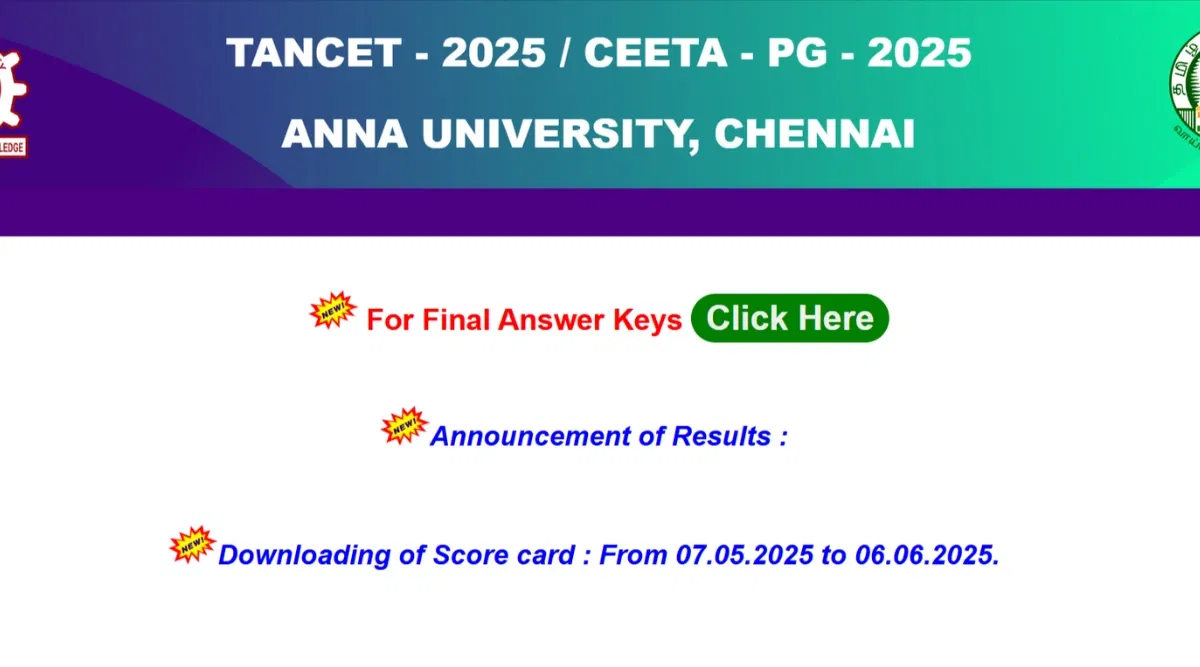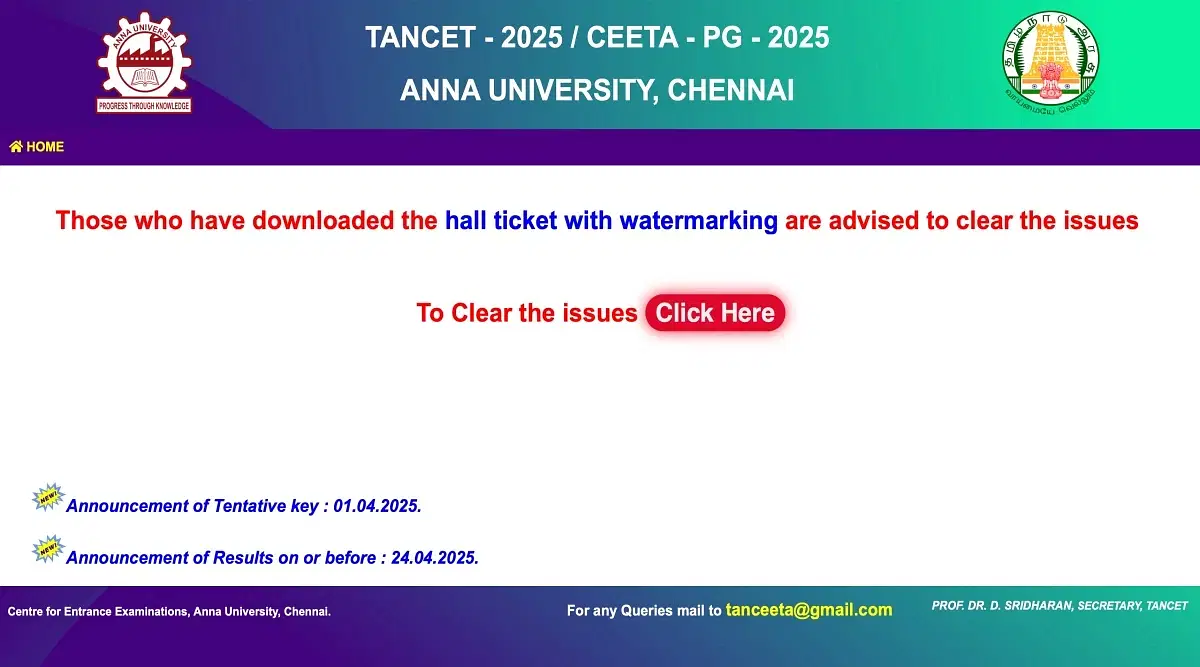
Table of Contents
TANCET Syllabus 2026 is designed by Anna University, Chennai. The syllabus is different for all the programs, namely, MBA, MCA, MTech, MArch, and MPlan. The syllabus comprises three sections, where the first two are same for all the branches and the third is subject-specific papers. Any changes made in the syllabus will be communicated by Anna University through its official website.
The TANCET 2026 Exam Dates will be announced and will be held in March 2026. Candidates need to thoroughly prepare as the difficulty level of quantitative aptitude, data sufficiency, and business analysis is a bit higher. Applicants must cover the entire TANCET syllabus 2026 before the exam. The detailed syllabus has been shared below for the candidate's ease.
TANCET Syllabus PDF Download Link
Candidates must go through and download the TANCET 2026 syllabus PDFs from the table below. Along with the syllabus, the candidates must also have a detailed understanding of the TANCET Exam Pattern 2026 to go through the marking scheme and weightage.
| Course | Download TANCET Syllabus PDF |
| TANCET ME/M.Tech/M.Arch/M.Plan (Part I, II, and III) Syllabus PDF | Download |
| TANCET MBA Syllabus PDF | Download |
| TANCET MCA Syllabus PDF | Download |
TANCET Syllabus for M.E, M.Tech, M.Arch and M.Plan
The question papers for courses M.E., M.Tech., M.Arch. and M.Plan have a similar structure. TANCET 2026 Syllabus comprises 3 parts, details of which are given below:
- Part I of TANCET Syllabus question paper has 20 questions, based on a subject called Engineering Mathematics. This part of the paper is the same for all courses.
- Part II of the paper consists of 35 questions, based on a subject called Basic Engineering and Sciences. Similar to Part I, Part II paper, based on TANCET Syllabus is also common to all these above-mentioned courses.
- The final part of the paper which is also Part III of TANCET Syllabus question paper has 60 questions. Questions in this part will be based on a subject chosen by a particular candidate. There are 23 subjects available for this section, from which a candidate can choose anyone.
- All the questions are Multiple Choice Questions (MCQ). Each correct answer carries one mark and for each wrong answer, 1/3rd of the mark is deducted. Candidates can regularly check out TANCET Syllabus.
TANCET Part 1 Syllabus
The TANCET Syllabus 2026 for Part I is given below in the form of a table. Candidates can go through the same for reference.
| TANCET Syllabus 2026 PART I | |
| Mandatory Sections | Important Topics |
| TANCET Syllabus 2026 PDF For Engineering Mathematics |
Determinants and Matrices Calculus and Differential Equations Vector Calculus Functions of Complex Variables & Complex Integration Transforms Numerical Methods Applied Probability |
TANCET Syllabus 2026 for Engineering Mathematics in Detail
TANCET Syllabus PART I of the same is elaborated below.
| Topics | Chapters |
| Determinants and Matrices | A Solving system of equations – Rank of the Matrix – Eigenvalues and eigenvectors – Reduction of quadratic form to canonical form. |
| Calculus and Differential Equations | Partial derivatives – Jacobians – Taylor’s expansion – Maxima and Minima. Linear ordinary differential equations with constant coefficients – Simultaneous first-order linear equations with constant coefficients. Formation of a partial differential equation (PDE) – Solution of the first-order PDE – Solution of linear higher-order PDE with constant coefficients are included in TANCET. |
| Vector Calculus | Double and triple integrations and their applications – Gradient, Divergence, Curl and Laplacian – Green’s, Gauss divergence and Stroke’s theorem. |
| Functions of Complex Variables and Complex Integration | TANCET consists of Analytic functions – Conformal Mapping – Bilinear transformation – Cauchy’s integral theorem and integral formula – Taylor and Laurent Series – Singularities – Residues – Residue theorem and its applications. |
| Transforms | Laplace Transform – Inverse transforms – Application to the solution of linear ordinary differential equations with constant coefficients. Fourier integral theorem – Fourier transform pair – Sine and Cosine transform. - Transform – Inverse Z–transform – Solution of difference equations using Z– transform. |
| Numerical Methods | TANCET includes the Solution of linear systems by direct and iterative methods – Interpolation and approximation – Numerical Differentiation and Integration – Solving Ordinary Differential Equations. |
| Applied Probability | Probability and Random variables – Standard Discrete and Continuous distribution – Moments – Moment generating function and their properties. Two-Dimensional Random Variables – Covariance – Correlation and Regression. |
TANCET Part II Syllabus
TANCET Syllabus 2026 for Part II is given below for the reference of the candidates.
| TANCET Syllabus 2026 - PART II | |
| Mandatory Sections | Important Topics |
| TANCET Syllabus 2026 for Basic Engineering & Sciences |
Applied Mechanics Mechanical Engineering Physics Material Science Civil Engineering Electrical Engineering Computers Chemistry |
TANCET 2026 Syllabus in Detail for Part II
TANCET 2026 exam Syllabus as per PART II of the same is elaborated below.
| Topics | Chapters |
| Applied Mechanics | Law of Mechanics – Lame’s theorem – Forces, Moments and Couples – Displacement, velocity, and Acceleration – Friction – Moment of Inertia. |
| Mechanical Engineering | Laws of thermodynamics – Open and closed systems – Equation of state – Heat and Work. |
| Physics | Sound – Latices – Ultrasonic flaw detector – X-ray radiography – Interference Fringes – Planck’s quantum theory – Laser and Fibre Optics. |
| Material Science | Fracture – Magnetic and Dielectric materials – Conductor and Semiconductor materials – Ceramic and Superconductor materials. |
| Civil Engineering | Fluid Statics and Dynamics – Boundary Layer – Pumps and Turbines – Environmental Pollution. |
| Electrical Engineering | Ohm’s law – Kirchoff’s law – A.C. circuits – D.C. machines – Transformers – Synchronous machines – Instrumentation. |
| Computer Engineering | Computer organization – Architecture – Arrays – Pointers – User-defined function – C program. |
| Chemistry | Adsorption – Chromatography – Chemical kinetics – Electrochemistry – Spectroscopy – Fuels and Combustion. |
TANCET Part III Syllabus (As per the specialization)
TANCET Syllabus 2026 for Part III is given below. This part is based on the candidates' specialization; hence, subjects and topics outside the candidates' specialization are not required.
TANCET Syllabus 2026 for Structural Engineering
| Topics | Chapters |
| Mechanics | Stress-Strain Relationships – Principal stresses and Principal strain in two and three dimensions. Composite Bars – Composite Beams – Elastic Constants. Beams and Bending – Shear Force and Bending Moment Diagrams – Flexural and Shear Stresses. Slope and Deflection of Beams. Thin and Thick Cylinders. Torsion. Theories of Failure – Unsymmetrical Bending – Curved Beams – Theories of Columns. Combined Direct and Bending Stresses. |
| Structural Analysis | Static and Kinematic Indeterminacy – Energy Principles – Deflection of pin-jointed plane frames – rigid frames. Classical Method of Analysis of indeterminate structures (Slope deflection and Moment Distribution) – Matrix Method. Arches and Suspension Bridges– Influence Line for Determinate and Indeterminate Structures. Plastic Analysis of Structures. |
| Building Materials | Cement – Concrete – properties of ingredients – Mix Design – Quality Control – Special Concrete – Concreting Methods – Brick – Brick Masonry – Stone – Timber – Steel. |
| Concrete Structures | Design Methods – Limit State Design for beams, slabs, columns, and footings – retaining walls – water Tanks. Prestressed Concrete – Principles – Methods – Losses – Deflection – Design. |
| Steel Structures | Steel Sections – Connections – Design of Tension and Compression Members – Beams, Column Bases – Plate Girders and Trusses. |
TANCET Syllabus 2026 for Soil Mechanics and Foundation Engineering
| Topics | Chapters |
| Soil Mechanics | Nature of soil – phase relationships – soil classification; Soil water – static pressure – effective stress principle; permeability – seepage; Stress distribution in soil – Consolidation (Terzaghi’s one dimension consolidation theory); Compaction shear strength of soil – Mohr-Coulomb theory – determination of shear strength by different methods; Slope stability analysis – protection measures. |
| Foundation Engineering | Site investigation – scope and objectives – drilling techniques – depth and spacing of boreholes – sampling techniques – penetration tests (SPT and SCPT) – plate load test – a selection of foundation; Foundation types – shallow foundation – bearing capacity (Terzaghis Theory and BIS formula) – allowable bearing pressure – bearing capacity from field tests – settlement of foundation – allowable settlement – Codal provisions; Design of foundations – Isolated, combined and raft foundation; Pile foundations – static and dynamic pile driving formulae (Engineering News and Hiley method) – Pile groups – capacity and settlement – Codal provisions – pile load test – negative friction on piles; Earth pressure theories – Earth pressure on retaining walls – stability analysis of retaining wall. |
TANCET Syllabus for Transportation Engineering
| Topics | Chapters |
| Highway Planning | Road classification, geometric design of highways, construction of Earth, WBM, bituminous and concrete roads, and design of flexible and rigid pavements. Drainage of roads, Maintenance of roads. Railways, Airways, Docks, and Harbour Planning: Railway alignment components of permanent way, geometric design Airport planning, components of an airport, site selection, planning for the terminal building, and runways. Harbour planning, components of a harbour, inland water transport. Traffic Engineering: Traffic characteristics, Traffic surveys, Traffic Signals, Road markings, and signs. |
TANCET 2026 Syllabus for Water Resources Engineering
| Topics | Chapters |
| Fluid Mechanics and Hydraulics | Properties of fluids. Fluid statics and relative equilibrium. Basic concepts of fluid flow – kinematics and dynamics. The concept of system and control volume application to continuity, momentum and energy equations. Dimensional analysis and model studies. Laminar and turbulent flow through pipes. Boundary layers. Steady uniform and gradually varied flow in open channels. Rapidly varied flows. Turbines and pumps and positive displacement pumps. |
| Hydrology and Ground Water | Hydrometeorology. Hydrologic cycle. Precipitation and its measurements. Abstractions. Runoff estimation. Hydrograph analysis. Unit Hydrograph. Hydrologic extremes include floods and droughts. Rainwater harvesting. Properties of an aquifer. Groundwater development. GEC norms. Well, hydraulics. Steady and unsteady flows. Groundwater quality. Irrigation Engineering: Irrigation system. National water policy. Components of irrigation network. Design of lined and unlined channels. Waterways, headworks, gravity dams, and spillways. Design of weirs on permeable foundation. Soil water relations. Crop water requirements. Irrigation scheduling and methods. Duty, delta and base period. Irrigation water quality. Irrigation water management. Participatory approach. |
TANCET Syllabus for Environmental Engineering
| Topics | Chapters |
| Water and Wastewater Engineering |
Water requirements; water demand; quality standards; Development of water supply source, conveyance system; basic unit processes and operations for water treatment; water distribution; sewage characteristics; sewage treatment, primary and secondary sewage treatment, sludge disposal, sewage disposal. Air Pollution and Control: Types of Pollutants, their sources and impacts, air pollution meteorology, air pollution control, air quality standards, and limits. Noise Pollution and Control: Impacts of noise, permissible limits of noise pollution, measurement of noise and control of noise pollution. |
| Surveying And Remote Sensing | Chain surveying, compass surveying – plane table surveying – levelling – theodolite surveying – Temporary and permanent adjustments for level and theodolite – trigonometric levelling – tachometry – traversing – contouring – Computation of areas and volumes. Curve Setting – simple, compound and reverse curves – transition curves – vertical curves – Electromagnetic distance measurement – Total station – construction surveying – hydrographic surveying – route survey- triangulation – an astronomical survey. |
TANCET 2026 Syllabus for Earth Sciences
| Topics | Chapters |
| Physical Geology and Geomorphology | Weathering process, kinds, and products. The internal structure of the earth, fundamentals of plate tectonics. Landforms produced by rivers, winds, glaciers, and sea. Drainage pattern, Drainage Index, geomorphic features. |
| Mineralogy, Petrology, Stratigraphy, Paleontology and Structural Geology | Physical properties of Industrial minerals classification, origin, and description of Igneous, sedimentary and metamorphic rocks. Origin of Himalaya’s major earth geological events through time scale. Origin of life, types of fossils evolution of mammals & Man. Joints, Folds, Faults, and Structures. |
| Economic Geology, Ore Geology, Geochemistry | Origin, occurrence and distribution of Economic mineral deposits-Iron, manganese, gold, zinc, graphite, lead, coal and petroleum deposits. Ore-dressing, ore-reserves, estimation. Major elements, application in environmental studies REE-its implication in Genesis/ provenance of rocks. |
| Remote Sensing, Geophysics and Hydrogeology | Sensors & Platforms- Indian Remote Sensing – Spectral system characterizes of rocks & minerals – Photogeology – Photogrammetry - Hydrogeology – Groundwater – occurrence, movement, Aquifer, field parameters & Lab methods of estimations. |
| Engineering Geology, Environment Geology, and Marine Geology | Engineering properties of Rock. A geological investigation is required for Dams, Tunnels, highways and building constructions. Renewable and non-renewable resources, pollution. Continental and marine environmental studies. Ocean features, physical, chemical & biological resources of the ocean. |
TANCET Syllabus for Mechanical, Automobile & Aeronautical Engineering
| Topics | Chapters |
| Pollution and Control | Emission formation in SI and CI Engines. Effects of design and operating variables controlling technique's constant volume sampling systems. Measurement techniques of HC, CO, NOx, and smoke emission. Dilution Tunnel and Sound level meters. |
| Automotive Electrical and Electronics | Types of Batteries, Principle, Construction, Starting System. D.C. Generators and Alternators. Regulations for charging Electronic ignition systems. Types of sensors and actuators for automobiles. Microprocessor-controlled devices in automobiles. Components for an electronic engine management system. PID control types of solid-state ignition systems and their operation. Fuel control maps open-loop control of fuel injection and closed-loop lambda control-integrated engine control system. Onboard diagnosis system. |
| Vehicle Body Engineering | Body optimization techniques for minimum drag. Wind tunnel technology. Classification of vibration, definitions. Single degree of freedom, free, forced and damped vibrations. Rolling resistance, and cornering properties of tires. Directional stability of vehicle Choice of suspension spring rate calculation of effective spring rate. Vehicle suspension in the fore and aft. Vehicle ride model and load distribution |
| Basics of flight mechanics | Aircraft configurations – Airplane structures – Airplane power plants – Airplane control systems – Aircraft instruments – Aircraft engine, air conditioning and pressurization system – Airfoil theory – Subsonic wing theory – Steady level flight, gliding and climbing flight and accelerated flight of aeroplanes – Fundamentals of hypersonic air-breathing and rocket propulsion systems – Stability and control of aeroplanes – Fundamentals of supersonic flows – High speed flows over airfoils, wings, and aeroplanes – Experimental techniques for high-speed flows. |
| Aerospace Propulsion | Fluid Flow Equations – Incompressible Viscous and Inviscid flows – Dimensional analysis – Fluid Machinery – Basic concepts in thermodynamics – Basics of propulsion and heat transfer – Air standard cycles – Properties of pure substance – Stresses in beams – Deflection of beams – Torsion – springs and columns – Biaxial stress system – Statically determinate and indeterminate structures – Energy methods – Failure theories- Induced stresses Basic aspects of boundary layer theory – Flow-through compressors, combustion chambers, gas turbines and nozzles of gas turbine engines – Unsymmetrical bending – Shear flow in open and closed sections – Buckling of plates and stress analysis – Fundamentals of computational fluid dynamics – Grid generation – Time-dependent methods and finite volume methods-finite element methods – discrete. Continuum and isoparametric elements – Field problem and method of solutions – composite materials. |
| Automotive Transmission | Construction and operation of friction clutches. Different types of gearboxes. Fluid couplings and torque converters. Wilson gearbox. Hydrostatic drive systems. Electric drive. Continuously Variable Transmission (CVT) types of car bodies classification of bus bodies. |
| Automotive Chassis | Front axle types front wheel geometry condition for true rolling motion steering geometry Ackermann and Davis steering. Types of steering gearbox. Propeller shaft Universal joints. Final drive differential types. Type of brakes and constructional details. Types of suspension, Independent suspension-front and rear Rubber, pneumatic, hydro-elastic suspension. |
| Production Technology | Foundry Technology, Hot and Cold working, metal forming processes, metal joining processes, welding metallurgy, welding defects, Metal cutting, centre lathe, and special-purpose lathe, drilling, milling, grinding, gear cutting, broaching unconventional machining processes, CNC machine tools, Part programming. |
| Applications | Power Engineering: Steam Tables, Rankine, Brayton cycles with regeneration and reheat. I.C. Engines: air-standard Otto, Diesel cycles. Refrigeration and air-conditioning: Vapour refrigeration cycle, heat pumps, gas refrigeration, Reverse Brayton cycle; moist air: psychrometric 20 charts, basic psychrometric processes. Turbomachinery: Pelton-wheel, Francis and Kaplan turbines – impulse and reaction principles – velocity diagrams |
| Heat and Mass Transfer | Modes of heat transfer; one-dimensional heat conduction, resistance concept, electrical analogy, unsteady heat conduction, fins; dimensionless parameters in free and forced convective heat transfer, various correlations for heat transfer in flow over flat plates and through pipes; thermal boundary layer; effect of turbulence; radiative heat transfer, black and grey surfaces, shape factors, network analysis; heat exchanger performance, LMTD and NTU methods.Basic Concepts of Mass Transfer – Diffusion Mass Transfer – Fick’s Law of Diffusion – Steady-state Molecular diffusion – Convective Mass Transfer – Momentum, Heat, and Mass Transfer Analogy – Convective Mass Transfer Correlations |
| Thermodynamics | Basic concepts and First Law, Second Law, Entropy and Availability, Properties of Steam, Air standard cycles, Otto, Diesel and Dual cycles, Air compressors, Rankine cycle, Brayton cycle, Stream Turbines, Gas Turbine – Steam Nozzle, Refrigeration and Air Conditioning, Conduction, Phase Change Heat Transfer and Heat Exchangers, Radiation, Refrigeration Cycles, Refrigerants, System Components, VAR, Psychrometry, Air Conditioning system. |
| Materials Science and Metallurgy | Constitution of alloys and phase diagrams, steels, cast iron, TTT diagram, heat treatment of ferrous and non-ferrous metal, surface modification techniques, non-metallic materials, mechanical properties, and testing, crystal defects and strengthening mechanisms conducting and semiconducting materials, magnetic and dielectric materials, Engineering ceramics, Engineering and commodity polymers. |
| Strength of Materials and Design | Stress, Strain and Deformation of solids, Transverse Loading on Beams and Stresses in Beams, Deflection of Beams, Energy Principles, Thin Cylinders and Spherical resells Torsion – Fundamentals of design for strength and Stiffness of Machine members, Design of Shaft and Couplings, Design of Fasteners and Welded Joints, Design of Spring and Engine parts, Design of Engine parts, Bearing and Flywheel, Design of Transmission system for flexible elements, Spur Gears and Parallel Axis Helical Gears, Bevel, Worm Gears and Crossed Helical Gears, Design of Gearboxes, Design of Cam, Clutches, and Brakes. |
| Mechanics | Statics of Particles, Equilibrium of Rigid Bodies, Properties of surfaces and Solids, Dynamics of particles, Friction and Element of Rigid Body Dynamics – Basics of Mechanism, Kinematics of Linkage Mechanism, Kinematics of Cam Mechanism, Gears and Gear Trains, Friction, Force Analysis, Balancing and Vibration. |
| Alternate Fuels | Properties alcohols, vegetable oils, biogas natural gas LPG and hydrogen as engine fuels methods of using all the fuels in SI and CI engines. Performance, emission and combustion behaviour of the fuels in SI and CI engines. |
TANCET 2026 Syllabus for Electrical & Electronics Engineering & Instrumentation Engineering
| Topics | Chapters |
| Electrical Circuits and Fields | KCL, KVL, Nodal & Mesh analysis, transient response of D.C and A.C networks; sinusoidal steady-state analysis; resonance in electrical circuits; concepts of ideal voltage and current sources, network theorems, driving point admittance and transfer functions of the two-port network, three-phase circuits; Fourier series and its application; Gauss theorem, electric field intensity and potential due to point, line plane and spherical charge distribution, dielectric, capacitance calculations for simple configurations; Ampere’s and Biot-Savart’ law, inductance calculations for simple configurations |
| Electrical Machines | Single phase transformer – equivalent circuit, phasor diagram, tests, regulation and efficiency; three-phase transformer –connections; auto-transformer; principles of energy conversion, windings of rotating machines; D.C generators and motors-characteristics, starting and speed control, armature reaction and communication: three-phase induction motors-performance characteristics, starting and speed control; single-phase induction motors; synchronous generators – performance, regulation; synchronous motors – starting characteristics, applications, synchronous condensers; fractional horsepower motors: permanent magnet and stepper motors. |
| Power Systems | Electric power generation – thermal, hydro, nuclear; transmission line parameters; steady-state performance of overhead transmission lines and cables and surge propagation; distribution system, insulators, bundle conductors, corona and radio interferences effects; per-unit quantities; bus admittance and impedance matrices; load flow; voltage control and power factor correction; economic operation; symmetrical components, analysis of symmetrical and unsymmetrical faults; the principle of overcurrent, differential and distance protection; concepts and solid-state relays and digital protection; circuit breakers; principles of system stability –swing curves and equal area criterion; HVDC system – Principle of operation, control and design consideration, HVDC circuit breaking; FACTS - Reactive power control, Uncompensated transmission line, Series compensation, SVC, thyristor control, series capacitor, static synchronous compensator, UPFC and applications |
| Control Systems | Principles of feedback; transfer function; block diagram; steady-state errors; stability-Routh and Nyquist criteria; Bode plots; compensation; root loci; elementary state variable formulation; state transition matrix and response for Linear Time-Invariant Systems. |
| Power Electronics and Drives | Semiconductor power devices-diodes, transistors, thyristors, triacs, GTO, MOSFETs and IGBTs-static characteristic and principles of operation; triggering circuits; phase control rectifiers; bridge converters-fully controlled and half controlled; principles of choppers and inverters, basic concepts of adjustable speed dc and ac drives. |
| Microprocessor and Microcontrollers | Microprocessor: General 8 bit microprocessor Architecture- 8085, 8086 processor – Architecture, Memory, I/O interfacing, Instruction set, Addressing modes, Timing diagram & delays, Machine cycles, Interrupts, counters, Assembly language programming. Microcontrollers: 8-bit microcontroller -8051 architecture, bus configuration, Instruction sets, programming & applications. |
| Digital Signal Processing | Analog signals - sampling & Aliasing- Discrete-time signals & systems – LTI systems – Convolution sum-Difference equation representation-Z Transform & its Inverse – Discrete Fourier series & Fourier transform- Radix 2 FFT – Decimation in me and frequency – Inverse DFT using FFT – Analog Butterworth & Chebyshev filter design –IIR & FIR filter design and Realization. |
| High Voltage Engineering | Causes of overvoltages and its effects on power system – Lightning, switching surges, and temporary overvoltages – concepts of reflections and refraction of travelling waves. Dielectric breakdown- Gaseous breakdown – Vacuum breakdown, Corona discharges – Generation of high voltage, High current and its measurements – DC, AC, impulse voltages and 17 currents; High Resistance with series ammeter – Dividers, Resistance, Capacitance and Mixed dividers – Peak Voltmeter, CVT, Electrostatic Voltmeters – Sphere Gaps – High current shunts; High voltage testing of electrical power apparatus as per International and Indian standards – Insulation Coordination. |
| Electric energy – Conservation and utilization | Fundamentals of Electric drives – choice and applications; traction motors – characteristic features – electric braking train movement and energy consumption; Design of illumination systems and various lighting schemes; Electric heating – methods of electric heating and its types – Electric welding - Principles of the conversion of solar radiation into heat; Solar Collectors-flat-plate collectors – concentrating collector – cylindrical parabolic; Wind energy conversion system – basic principles – site selection – basic components – Classification of WECS – Types of wind machines. |
TANCET Syllabus for Electronics & Communication Engineering
- Circuit Analysis: DC Circuit analysis, Thevenin’s and Norton’s equivalent circuits, Sinusoidal steady-state analysis, Transient and resonance in RLC circuits.
- Electronic Devices: Diodes, Bipolar Junction Transistors, FET, MOSFET, UJT, Thyristor.
- Electronic Circuits: Small signal amplifiers using BJT and FET devices, Large signal amplifiers, Power supplies, Feedback amplifiers, Oscillators, Pulse shaping circuits.
- Digital Electronics: Logic gates, Combinational Circuits, Sequential circuits.
- Linear Integrated Circuits: Operational amplifiers and its applications, PLL, Voltage regulators, A/D and D/A converters.
- Measurements and Instrumentation: Transducers, Digital Instruments, Display and Recording systems.
- Microprocessor and its applications: Microprocessors-8085 and 8086 architectures and interfaces, Micro-controller and applications.
- Electromagnetic Fields: Static Electric and Magnetic fields, Time-varying Electric and Magnetic fields, Maxwell equations.
- Transmission Lines and Networks: Transmission line equations, impedance matching, Filters.
- EM waves and waveguides: Guided waves, Rectangular, and cylindrical waveguides.
- Antennas and Propagation: Aperture antennas, arrays, Propagation of radio waves.
- Microwave Engineering: Microwave tubes, semiconductor devices, Passive components, Microwave measurements.
- Communication Theory and Systems: AM, FM, and PM, Sampling and Quantization, PCM, DM, ADM, Multiplexing.
- Digital Communication: Baseband signalling, Bandpass signalling, Error control coding, spread spectrum techniques.
- Computer Communication Networks: Definition of layers, data link protocols, Network Interconnection. Message routing technologies, End-End protocols.
- Optical Communication: Optical Fibers, optical transmitters, and receivers.
- Signals and Systems: Continuous-time signals and systems-Fourier Transform, Laplace transform, discrete-time signals and systems-DTFT, DFT, Z-Transform.
- Digital Signal Processing: IIR and FIR filters, Realization and implementation, Quantization effects.
- Control Systems: Transfer function, Time and frequency response analysis, Stability analysis, state variable analysis.
TANCET Syllabus for Production & Industrial Engineering
- Basic Mechanisms and Elements of Design: Mechanisms, Friction, Gearing and Cams, Balancing, Vibration, Fundamentals of Design, Design of Basic Machine Elements, Design of Mechanical drives, Design of Automotive Components, Recent Advances.
- Casting, metal forming and metal joining processes: Casting Processes, Welding Processes, Special Casting Processes, Testing of Castings & Weldments - Fundamentals of Metal Forming, Forging and Rolling, Extrusion and Drawing Processes, Sheet Metal Forming Processes, Recent Advances, Mechanisms, Friction, Gearing and Cams, Balancing, Vibration, Fundamentals of Design, Design of Basic Machine Elements, Design of Mechanical drives, Design of Automotive components, Recent Advances as per TANCET Syllabus.
- Tool Engineering, Machine tool operation, Metrology and Inspection: Mechanics of Metal Cutting, Tool Material, Tool Wear and Tool Life, Gear Manufacture, Concept & Programming of CNC machines, Advanced CNC programming & Tooling - General Concepts of measurements, Linear and Angular measurements, Measurement of Surface Finish Measuring Machines, Metrology of Screw Thread & Gears, Computer-Aided Inspection and Laser Metrology - Strength and rigidity of machine tool structures, Slideways, Spindles and spindle supports, Machine Tool Dynamics as per TANCET Syllabus.
- Engineering Materials, and Computer-Aided Manufacturing: Introduction and Constitution of Alloys and Phase Diagrams, Heat Treatment, Ferrous and Non-Ferrous Metals, Mechanical Properties and Testing, Welding and Foundry Metallurgy, Manufacturing Processes for Plastic, Mechanical, Chemical and Electrochemical energy-based processes, Electrical Energy-based Waste Processes, Thermal Energy Process, Rapid Prototyping and Rapid Tooling – polymer Matrix Composites, Metal Matrix Composites, Ceramics Matrix Composites, Advances in Polymers & Composites.
- Product and Process Design, Design of Jigs and Fixtures and Press Tools: Computer-Aided Design, Computer Graphics Geometric Modelling, Product Design Concepts, Recent Advances, Process Planning, Estimating, Costing and Elements of Cost, Analysis of Overhead Expenses, Estimation of Costs for Forging, Casting and Welding, Estimation of Machining Time, Purpose Types and Functions Of Jigs and Fixtures, Jigs, Fixtures, Press working Terminologies and Elements of dies and Strip Layout, Design and Development of Dies as per TANCET Syllabus.
- Operations Research: Linear Programming, LP Extensions, Networks, Inventory Models, Dynamic Programming, Decision Analysis, Game Theory, Waiting Line Models, Markov Processes.
- Operations Management: Forecasting, Aggregate Planning, Capacity Management, Production Activity Control, Estimation and Costing, Product Cost Estimation, Software Cost Estimation, Costing Methods, Cost Analysis for Planning and Control.
- Quality Control Reliability and Maintenance: Quality Concepts, Statistical Process Control, Process Capability Analysis, Advanced Control Charts, Acceptance Sampling, Reliability Concepts, Failure Data Modeling, Reliability Prediction, and Modeling, Reliability Management, Risk Assessment, Maintenance Concept, Maintenance Models, Maintenance Logistics, Total Production Maintenance, Fault Diagnosis as per TANCET Syllabus.
TANCET Syllabus for Computer Science Engineering & Information Technology
- Applied Probability & Operations Research: Random Processes, Probability Distributions, Queuing Models and Simulation, Testing of Hypothesis, Design of Experiments.
- Discrete Mathematical Structures: Formal Language and Automata - Graph Theory.
- Compiler Design: Optimization – Code Generation – Implementation – Principles of Programming Languages – Programming Paradigms.
- Operating Systems & System Software: Process Management, Storage Management, I/O Systems, Design and Implementation of LINUX OS, assemblers, Loaders, Linkers, and Macro Processors.
- Distributed Systems: Communication and Distributed Environment, Distributed Operating Systems, Distributed Shared Memory, Protocols, Fault Tolerance, Distributed File Systems, Distributed Object-Based Systems.
- Programming & Data Structures: Problem Solving Techniques, Trees, Hashing and Priority Queues, Sorting, Graph, Heap Search.
- Algorithm Analysis & Design Techniques: Dynamic Programming, Greedy Algorithms, Advanced Algorithms, NP-completeness, and Approximation Algorithms.
- Microprocessors & Microcontrollers - Computer Architecture And Organisation: Digital Fundamentals, Combinational Circuits, Synchronous and Asynchronous Sequential Circuits, Instruction Set Architecture (RISC, CISC, ALU Design), Instruction Level Parallelism, Processing Unit and Pipelining, Memory Organization as per TANCET Syllabus.
- Digital Signal Processing: FFT, Filter Design.
- Computer Networks: Data Communication Systems, Applications.
- Database Management Systems: Relational Model, Database Design, Implementation Techniques, Distributed Databases, Object Oriented Databases, Object-Relational Databases, Data Mining and Data Warehousing.
- Software Engineering Methodologies: Software Product and Processes - Software Requirements Management - Requirement Engineering, Elicitation, Analysis, Requirements Development and Validation, Requirements Testing - Object-Oriented Analysis And Design – Modular Design, Architectural Design, User Interface Design, Real-Time Software Design, System Design, Data acquisition System - Software Testing And Quality Assurance - SQA Fundamentals, Quality Standards, Quality Metrics, Software Testing Principles, Defects, Test Case Design Strategies, Software Quality and reusability, Software Project Management, Software Cost Estimation, Function Point Models, Software Configuration Management, Software Maintenance as per TANCET Syllabus.
- Artificial Intelligence: Intelligent Agents, Search Strategies, Knowledge Representation, Learning, and Applications.
- Mobile Computing: Wireless Communication Fundamentals, Telecommunication Systems, Wireless Networks.
- Security In Computing: Program Security, Security in Operating Systems, Database, and Network Security, Scientific Computing, Information Coding Techniques, Cryptography, Network Security.
TANCET Exam Syllabus for Chemical Engineering
- Fluid Mechanics and Particle Technology: Classification of fluids, flow patterns, manometry, continuity equation, Navier-Stokes’ equation, Bernoulli equation, Dimensional analysis, Flow-through pipes, Boundary layer concepts, Flow-through fixed and fluidized beds, pumps – classification affinity laws, performance curves. Characteristics of solids, size analysis, screening, storage, Conveyance, Size reduction, Classifier, Centrifuges, Cyclones. Filtration, Mixing, and agitation as per TANCET Syllabus.
- Chemical Technology and Process Calculations: Gas calculations, Material balance and Energy balance – Steady and unsteady state, Humidity and Saturation, Combustion, Thermochemistry, Role of Chemical Engineers in the process industry, Cement, glass and ceramic industries, paper industry – oil, soap, detergent industries, petroleum refining and petrochemicals – polymer industry, Fertilizers, Food industry and other important process industries as per TANCET Syllabus.
- Thermodynamics and Kinetics: Laws of thermodynamics, PVT behaviour of fluids, Thermodynamic formulations, compression of fluids, Phase equilibria – Application of the correlation and prediction. Free energy change and reaction equilibria. Refrigeration- principles, performance. Reaction rate – laws, theories, analysis. Design of reactors, Factors affecting the design, Thermal reactors and rates of heat exchanges. Non-ideal reactors, Heterogenous reactors, and solid catalysts, Gas-solid catalytic reactors, Gas-solid non-catalytic reactors, Gas-liquid reactors.
- Heat and Mass Transfer: Modes of Heat transfer. Heat conduction- steady and unsteady state, Natural and forced convection, Heat transfer to fluids with phase change, heat transfer coefficients, evaporation, heat exchangers – design and construction. Diffusion, Mass transfer coefficients, humidification, drying, absorption, distillation, extraction, leaching, crystallization, adsorption and ion exchange, analogies as per TANCET Syllabus.
- Process control and Computer Applications in Chemical Engineering: Open-loop systems, closed-loop systems, Frequency response, advanced control systems, Instrumentation. Application of spreadsheet packages in chemical engineering, Process flow sheeting, and Development of software for the design of the equipment. Dynamic programming in Chemical Engineering.
- Organic and Surface Chemistry: Carbohydrates, Oils, Fats and Waxes, Heterocyclic compounds, proteins, dyes and dyeing, pharmaceutical chemistry. Adsorption – types, adsorption of gases over solids, isotherms, applications, ion exchange, adsorption chromatography, Catalysis – types, Equations as per TANCET Syllabus.
- Environmental Pollution and Control: Various methods of reduction of pollution, types of pollution, Air pollution- sources and effects – control techniques, water pollution – sources and effects – control techniques, Soil pollution – sources and effects – control techniques and solid waste disposal.
TANCET Biotechnology Syllabus 2026
- TANCET Biotechnology Syllabus for Bioprocess Engineering: Analysis of STR, Analysis of other configurations, Bioreactor scale-up, Modeling and Simulation of Bioprocesses, Bioreactor Considerations in Enzyme Systems.
- Cell and Molecular Biology: Cells, Cell lines, Cell culture, Cell Organelles, and its functions, types of Cell divisions, cell cycle and its regulation mechanism. The transport mechanism (passive, Active, ATPase pumps and Na+ /K+ pumps), receptors, signal Transduction, models of signal Amplification Secondary messengers, Structure of Nucleic Acids, Replication, Transcription, Translation and DNA repair mechanism in Prokaryotes and Eukaryotes. Promoters, Enhancers and Transcription factors. Genetic Codes and Lac & trp operons as per TANCET Syllabus.
- Biochemistry and Microbiology: Structure, function, and metabolism of carbohydrates, lipids, Nucleic Acids, and proteins. Enzymes and its mechanism. Electron Transport Chain system, High energy compound and reducing equivalents. History of Microbiology, Classification of Microorganism, structural organization and multiplication of microorganisms. Physical and chemical control of microorganisms, Primary and Secondary metabolites and their applications.
- TANCET Biotechnology Syllabus for Genetic Engineering: Genes, Control of gene expression, Restriction enzymes, Vectors (prokaryotic and Eukaryotic) construction of cDNA and genomic Library. Screening of DNA libraries, PCR, RACE, PCR, RAPD, RFLP, AFLP, site-directed mutagenesis, and Methods of Nucleic acid sequencing. Cloning vectors in plants, Transgenic, and Knockout animals as per TANCET Syllabus.
- Immunology: Immune system, immunity, lymphoid organs, antigens, adjutants, types of an immune response. Activation and a different ion of T-cells and B –B-cells, Antibodies, Genes and generation of diversity, monoclonal antibodies. MHC APC, regulation of T-cell and B-cell responses. Immunity to viruses, Bacteria fungi, parasites, cytokines, complements, immunosuppression, allergy, and hypersensitivity. Vaccines, Transplantation, Tumor, Immunology, Autoimmunity and Autoimmune disorders.
- Bio-informatics: Search engines and algorithms, data management, data technology, biological databases, and their uses. Pairwise sequence alignment (local and global), multiple sequence alignment, dot matrix, dynamic programming and Bayesian methods. BLAST, FASTA, machine learning, and Hidden Markov Models. Phylogenetic tree analysis. Bimolecular and cellular computing, microarray analysis and system Biology as per TANCET Syllabus.
TANCET 2026 Syllabus for Textile Technology
- Fibre Science and Technology: Cotton varieties and their properties; silk – pre and post-cocoon operations; varieties of silk and their properties; varieties of wool and their properties; properties of other natural fibres. Production and properties of viscose rayon and other regenerated fibres. Requirements of fibre-forming polymers; structural principles of polymeric fibres; fluid flow during spinning; the technology of melt, wet, dry, dry-jet wet, liquid crystal and gel spinning of polymeric fibres. Production, properties, and applications of PET polyester, nylon 6, nylon 66, polyacrylonitrile and polypropylene. Spin finishes; drawing; heat setting; crimping and texturization; tow to top converters and tow to staple converters. Structural investigation of fibres; study of moisture absorption, tensile behaviour, torsional rigidity, and flexural rigidity, and optical, frictional, electrical and thermal properties of fibres as per TANCET Syllabus.
- Yarn Engineering: Yarn numbering systems- direct, indirect and conversions. Description and working of short-staple spinning machinery - blow-room machinery, card, comber preparatory machines, comber, draw-frame, speed-frame, ring-frame; calculation of process parameters and process efficiencies; production calculations. Methods of mixing and blending; two-folding of yarns; two-for-one twist principle; man-made fibre processing. Principle and details of yarn formation in condensed yarn spinning, rotor spinning, friction spinning, air-jet spinning, and other new spinning systems; the structure of yarns produced from different spinning systems. Control of waste, productivity, and quality as per the TANCET Syllabus.
- Fabric Engineering: Fundamental concepts in the winding, modern automatic winders; yarn clearing; winding synthetic and blended yarns and sewing threads; weft winding; Creels used in warping machines; beam and sectional warping machines; Sizing materials and recipes: size preparation and application; control systems used in sizing machine; sizing filament yarns; combined dyeing and sizing; energy conservation in sizing; process control in weaving preparation; preparation of warp beam for weaving.
- Yarns quality requirements and preparations for high-speed weaving machines. Principles and limitations of various shedding, and picking mechanisms; power required for picking; timing different mechanisms; automation and modern developments in a weaving machine; cloth formation; loom accessories; process control in weaving as per TANCET Syllabus.
- Cloth geometry; cover factor; concepts in fundamental and advanced woven fabric designs. Quality and preparation of yarn required for knitting; basic weft knitted structures and their production; needle control in weft knitting machines; factors affecting the formation of a loop; effect of loop length and shape on fabric properties; process control in knitting; warp knitting fundamentals. Web forming techniques for the dry method of web preparation; production of bonded fabrics by mechanical, chemical and thermal methods; productions of spun-bonded and melt-blown fabrics; end uses of bonded fabrics as per TANCET Syllabus.
- Chemical Processing: Chemical structure and chemical properties of natural and man-made fibres; singeing; desizing; scouring; bio preparatory operations; Mercerization; bleaching; heat setting; processing machines. Adsorption isotherms; dye-fibre interaction; properties and application of direct, azoic, vat, Sulphur, reactive, acid, mordant, metal-complex, disperse and basic dyes; dying of blends; garment-dyeing; assessment of colourfastness. Fundamentals of colour measurement; whiteness and yellowness indices; colour matching; spectrophotometers. Methods and styles of printing; printing machines; printing paste; printing with direct, reactive, acid and disperse dyes and pigments. Calendaring; crease proofing; anti-shrinking; softening; felting and non-felting of wool; bio-polishing; assessment of finishes; assessment of eco-friendliness of textiles; finishing of knits; garment washing.
- Quality Evaluation: Textile quality parameters; online and offline testing methods. Measurement of length and length uniformity, fineness, strength, maturity, trash content, the moisture content of fibres using conventional and modern testing methods; advanced fibre information systems, high volume testing; measurement of a lap, sliver and roving irregularity. Assessment of count, twist, hairiness, strength, and extension, evenness, imperfection, friction, crimp rigidity, work of rupture, fatigue, the abrasion resistance of yarn; classification of yarn faults. Determination of fabric construction parameters; assessment of tensile, bursting and tear strengths, low-stress mechanical properties, permeability, insulation properties, durability, comfort and handling properties of fabrics; grading of fabrics based on defects. Sampling; statistical significance tests; control charts as per TANCET Syllabus.
TANCET 2026 Syllabus for Leather Technology
- Pre Tanning Operations: Hides & Skins – Histological characteristics structure of hides & skins defects – curing & preservation methods – Animal by-products – soaking, unhairing, liming, deliming, bating, pickling, depicting and degreasing– Their objectives & principles involved. Biochemistry of collagen and other substances – chemicals & auxiliaries used in pre-tanning operations – General pre-tanning processes for the manufacture of different types of heavy and light leathers - Process control in pre-tanning – Eco-friendly pre-tanning operations – Physical and chemical testing - Standards and quality control measures in tanning. By-products of animal and tannery operations.
- Tanning Operations: Tanning materials – Vegetable, mineral and organic - their classification – Chemistry & Technology of tanning materials & methods – characterization manufacture & analysis of various tanning materials. Theory & mechanism of vegetable, chrome, Aluminum, Zirconium, Iron, Titanium, Aldehyde, Oil, and other organic tanning. Various unit operations involved in tanning processes their objectives & principles – cleaner processing options – Analysis & characterization of various types of leathers - Physical and chemical testing - Standards and quality control measures in tanning operations as per TANCET Syllabus.
- Post Tanning and Finishing Operations: Retaining, dyeing – fatliquoring and finishing operations – Their objectives & principles – chemicals used for the above unit operations – Syntans, fatliquors, dyes, dye-auxiliaries, pigments, acrylic and protein binders, wax emulsion, fillers, topcoats, NC, CAB lacquers and lacquer emulsions, feel modifiers, their nature & properties in finishing – machinery & methods for post tanning and finishing operations – up-gradation methods – chemical and physical properties required for various finished leathers – physical & chemical testing of finished leathers – Tannery Effluent treatment –Effluent treatment plant - Liquid and solid waste management.
- Leathers & Leather Products: Various types of leathers – upper, sole, garment, leather goods, sports & especially leathers – their characteristics. Leather supplement and synthetics - Design & manufacture of footwear, leather goods & garments. Leather Economics and Industrial Management – Project feasibility reports – organization & management of leather sector – marketing & export of leather & products - Machines for leather products manufacture - mechanics & operation - IT applications for leather & product design. Professional Ethics and human values as per TANCET Syllabus.
TANCET MBA Syllabus
TANCET syllabus for MBA 2026 has been shared in the table below in detail for candidates reference.
| Section | Important Topics |
|---|---|
| TANCET Syllabus for Business Analysis | This section does not have any predefined TANCET Syllabus. You will be given business situations in paragraph form, which some questions will follow. |
| TANCET Syllabus for Reading Comprehension & Verbal Ability | Reading Comprehension, Synonyms, Antonyms, Fill in the blanks, Grammar, Vocabulary, Sentence Corrections, Idioms, Cloze Test, One Word Substitution, |
| TANCET Syllabus for Quantitative Aptitude | Number System, HCF LCM, Percentages, Ratios, Averages, Simple & Compound Interest, Profit & Loss, Time Speed & Distance, Time & Work, Mixtures & Allegations, Quadratic Equations, Linear Equations, Logarithms, Series & Progressions, Binomial Theorem, Surds & Indices, Functions, Inequalities, Modulus, Geometry, Mensuration, Trigonometry, Co-ordinate Geometry, Permutation & Combination, Probability, Set Theory |
| TANCET Syllabus for Data Sufficiency | Data Sufficiency section also does not have a set syllabus. The questions will mainly be based on Number Systems, Arithmetic Topics, and Algebra. Questions on topics of Data Interpretation like Pie charts, Line graphs, Bar graphs, and Tables can also be expected. |
TANCET MCA Syllabus
TANCET MCA Syllabus 2026 is given below for the candidates to look at. Candidates will get a clear idea about TANCET Syllabus 2026 for the MCA Subjects in the form of a table.
| Section | Important Topics |
|---|---|
| For Business Analysis | This section does not have any predefined TANCET Syllabus. You will be given business situations in paragraph form, which some questions will follow. |
| For Reading Comprehension & Verbal Ability | Reading Comprehension, Synonyms, Antonyms, Fill in the blanks, Grammar, Vocabulary, Sentence Corrections, Idioms, Cloze Test, and word Substitution are the important topics for this section of TANCET Syllabus. |
| TANCET Syllabus for Quantitative Aptitude | Number System, HCF LCM, Percentages, Ratios, Averages, Simple & Compound Interest, Profit & Loss, Time Speed & Distance, Time & Work, Mixtures & Allegations, Quadratic Equations, Linear Equations, Logarithms, Series and Progressions, Binomial Theorem, Surds & Indices, Functions, Inequalities, Modulus, Geometry, Mensuration, Trigonometry, Co-ordinate Geometry, Permutation & Combination, Probability, Set Theory |
| TANCET Syllabus for Data Sufficiency | Data Sufficiency section also does not have a set or defined TANCET Syllabus. The questions will mainly be based on Number Systems, Arithmetic Topics & Algebra. Questions on topics of Data Interpretation like Pie charts, Line graphs, Bar graphs, and Tables can also be expected. |
Also Read: TANCET MBA Question Papers: Section-wise Important Questions
FAQs on TANCET Syllabus
Q: Which section has the highest weightage of marks as per the TANCET syllabus 2026?
As per the TANCET syllabus, the MBA equal and MCA each section carries marks whereas for the ME/MTech/MArch/MPlan program the third section carries 60 marks which is the highest.
Q: Which authority drafts the TANCET 2026 syllabus?
The TANCET syllabus is drafted by Anna University, Chennai which is also the conducting body of the exam.
Q: Is Quantitative aptitude part of the TANCET exam syllabus 2026 for both MBA and MCA?
Q: What is the ideal time to cover the entire TANCET exam syllabus 2026?
There is no ideal time frame to cover the syllabus as the capability of every candidate differs however is should not take more than 8 to 9 months to cover the entire syllabus.
